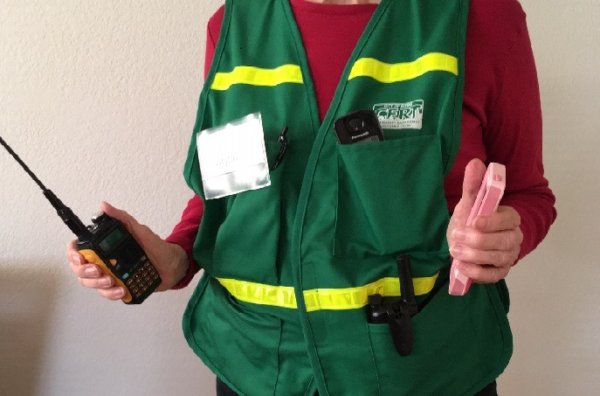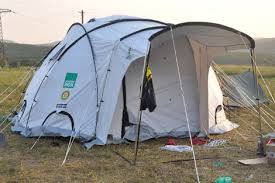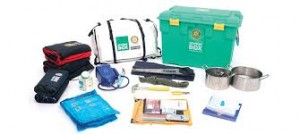California wildfire! Here’s what yesterday was like . . .

We live in a senior community right in the center of our Southern California city. One edge of the city butts up against the wildland interface: hills cut by sharp ravines, covered with dry grasslands and brush. The other side of town runs gently downhill toward the Pacific Ocean (about 8 miles away). Every year we endure strong winds coming over the mountains off the desert – the so-called “Santa Anas.” Every year the winds carry with them the threat of a wildfire. This week the winds started with a vengeance on Sunday night. This is what happened here on Monday.
7:14 Waking up. Whew. Smell of smoke is strong! So windy last night, with strange booms and flopping sounds. And our motion-activated porch light was driving me crazy – it kept going on and off, on and off.
7:18 Banging on the door! I open to great loud gusts of wind and clouds of dust and the community managers, disheveled and out of breath. Are we awake? Do we have the bullhorn? (As head of our Emergency Response Team we keep some supplies in our shed.) They rush off.
7:23 I log on and get the official notification: “Vegetation Fire 6:47AM in the area of Santiago Canyon Rd / Silverado Canyon Rd. Firefighters on scene of a 10 acre fire, wind driven with a moderate rate of spread. Crews aggressively attacking the fire with air units en route.“
7:46 Phone call from neighbor. “I drove up to see what the fire was doing and am sending you a photo!” (Dramatic shot of fire topping a ridge.)
9:11 (I send email to my team) “Please turn ON your M.E.R.T. walkie-talkie to your Division channel. Have your fire extinguisher close at hand. Be on the lookout for flying embers and attack fire immediately – IF IT IS SAFE TO DO SO. Command will be monitoring on Channel 7. You can follow our local fire department on Twitter @OCFA_PIO.”
9:15 Phone call to a M.E.R.T. member I know sleeps late (with earplugs). Unable to raise her.
9:22 Phone call to neighbor who has guide dog. She has called the “Help” number for people with disabilities. All she got was, “If you need help we can send a car for you.” We have dozens of people in our senior community with one or another disability, and “sending a car” is not a plan!
9:35 Finally get a shower and get dressed. Phones are ringing. I end up digging out my vest so I can carry all phones with me at the same time. I am in constant contact with someone. (Many are known procrastinators in our community!)
10:00 Phone call to neighbor across the street who is housebound and on oxygen. “I’m scared!” she says weakly. I tell her to get dressed “in real clothes” and put on shoes and pack up her medicines, just in case. (She has no car and no nearby family.) “We won’t leave without you,” I promise.
11:05 Branches have come down onto our garage roof from big redwood tree. (Those booms from last night!) Joe puts on gloves, grabs ladder and rake, and pulls them down. We see more downed branches in our neighbor’s back yard and remove those too. Winds continue, stronger than ever. Joe coughs and his eyes are irritated from the smoke. Mask is no help.
12:00 Evacuations start up the hill at the wildland interface. Our daughter is in the first evacuation zone.
12:21 I track the growth of the fire on TV. Fire Department reports: “150 firefighting units are working the Silverado Fire. 20-30 mph erratic winds that can reach up to 60-70 mph. Approximately 20,000 homes evacuated.“
1:00 pm “Silverado Fire has grown to 2,000 acres. All air support has been grounded due to high winds. If you are in the evacuation area please evacuate immediately. See below for school list evacuation.” Seven city elementary schools are being evacuated, with 9 more recommended. Parents told to pick up kids at their schools or later at one of area high schools.
City reports 2 emergency shelters have been set up. I send out email to my response team members and management repeats it to everyone via our reverse phone service. Before that report has even registered both shelters are full and 2 more shelters have been opened. (Over the course of the day our city opens 9 shelters. They fill fast. Only 3 have room at end of day.)
Call from neighbor. “Should I take bottled water to the shelter? How much?” (I sigh and put on a friendly voice.)
Call from another neighbor. “I can’t find the pink slip for my car!” (I retain the friendly voice, refrain from reminding her that we put out a full list of emergency documents just a couple of weeks ago.)
1:00 or so Joe and I build a couple of boxes and start putting file folders with important original documents into them. Our Go-bags sit by the door, waiting for last minute additions. (I add snacks.)
1:22 Response team member calls via walkie-talkie. We are interrupted by Morse Code messages from another group somewhere using the same channel.
1:25 A neighbor calls to check on traffic conditions. She has to travel into the evacuation zone. What?? “My cat needs special food that I can only get at that particular pet store.” I wish her good luck, noting that I need to go back and add this story in our Protect Your Pet book, scheduled for publishing this weekend!
1:35 Our daughter calls. “Can we evacuate with the dog to your house?” (How do you answer if you’re worried about COVID? If you are busy helping neighbors and getting ready to evacuate yourself? ) We decide it would be better if she went to another family member closer to her.
2:17 Text message from Food Delivery service. “No food delivery today.”
2:21 I send email to NextDoor website with basic info about evacuating and link to our website. The email is acknowledged by at least one reader!
2:46 Life goes on as previously planned. I get a cellphone call from my doctor’s office to confirm a video appointment set for tomorrow. We test the video technology.
3:00 My neighbor with the guide dog calls via cell saying she has been in touch with local bus service that provides transportation to seniors. What that organization can actually do for us remains unclear.
3:00 I receive email from City. “CERT will NOT be activated.”
3:15 Evacuation zones expanded further down the hill, now about 1/2 mile away.
3:19 I receive phone call from another neighbor telling me she has arranged for her children to pick her up later, “Just wanted you to know.” As people leave, it is clear there is no way of keeping track who is here and who has gone.
3:34 Emergency Alert arrives via text and phone announcing mandatory evacuation for parts of neighboring town. Traffic jams reported.
3:35 I notice a big ad on the police website: “Sign up for emergency notifications. Now is the time.”
4:42 Email arrives from team member saying she has discovered a HAM radio operator out there who is scanning emergency airwaves and reporting on fire and police activity. I can’t seem to find the right channel.
4:44 Team member sends email message that Red Roof Inn takes people and a pet up to 80 libs.
4:49 Community management sends out call: “The Wildfire Evacuation Warning Area now extends to the street bordering our community. All people with disabilities or with pets should leave.”
4:55 I make third call to City hall to remind Community Services that if mandatory evacuation is called our community will need buses and social workers to help evacuate those neighbors who are disabled, lack transportation and/or money. Even though I reach a couple of live people no one has any knowledge of a plan.
5:00 Joe’s daughter calls to say they have re-evacuated to a hotel closer to the coast. The dog is with them.
5:32 I finally get through (via a helpful assistant) to Emergency Operations Center. The assistant transmits this report:
“You are not likely to become even a secondary evacuation warning zone. If things change, we will call you personally. We are fully aware of the circumstances in your community and will be prepared to assist as necessary.”
Well, this is a big step in the right direction! The fire seems to be trending south and away from us. I can now take a deep breath! I send out my report via email and get relieved answers.
Of course, the threat of immediate evacuation may be over. But the day goes on. . .
5:41 Police Department: “The Police Department has issued an additional IMMEDIATE EVACUATION ORDER (Mandatory) for all residences between Great Park and Bake, and north of Toledo until the city limits.” (This isn’t us.)
5:44 Police Department tweet: “Expanded instructions . . .”.
6:30 I see car pulling in to neighbor’s driveway. He has recently had surgery. It’s his daughter. She decides to take him with her, and comes over to offer Joe and me a place if we need one! (Never met her before.)
7 pm. Tweet sent to City from a resident: “Please issue WEA alerts! Since not everyone is on AlertOC [our local alert platform]. WEA is helpful for those who are deaf, disabled, or those that need assistance!” (FYI I wrote about WEA here.)
7 pm announcement: “Silverado fire: 7200 acres •500 firefighters •0% Containment.“
Somewhere in here we finish dinner, watch the news, take a shower to get rid of the worst of the smoke smell.
9 pm We fall into bed. A neighbor calls to report her reservation at a local hotel was not honored and all hotels are full so she has had to come back. . .
Yes, the day ended. At 7:00 am the next morning the update read: Silverado Fire update: 14 helicopters 11,200 acres More than 750 firefighters 5% contained 10-15 mph winds with ridge top gusts reaching 35 mph Residents under evacuation order: 70,000 Irvine 6,000 Lake Forest
And so it continued.
There are many more stories from this day, but you get the idea. It wasn’t fun.
But what would it have been like if that red evacuation zone on the map had inched over one more street and into our neighborhood?!
Over the years we have met with members of five different city and county agencies on the topic of emergency response. We’ve discussed many times the challenges of evacuating from our location and the needs of our most vulnerable neighbors. On Monday, we did not get any real reassurance that authorities were ready with a plan for us. Now, there may be a plan and it just wasn’t on the top of anybody’s clipboard. . . ?
In any case, there will be more to this story!
Virginia
Your Emergency Plan Guide team


